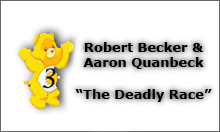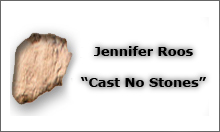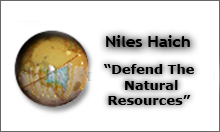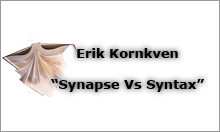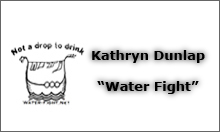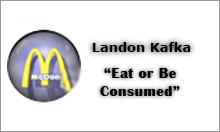Peripherals
Ulmer
How does a memorial peripheral work? A memorial proper, such as the Vietnam Wall on the Mall in Washington DC, honors a sacrifice for an acknowledged community value. The peripheral establishes a connection between this acknowledged value and the unacknowledged but lived value of the loss in the private sphere--in this case traffic fatalities. Peripheral memorialization already occurs both officially and unofficially. In the case of 9/11, the many wall posters for missing persons papered around the neighborhood of Ground Zero represented an unofficial or spontaneous peripheral memorial. (Ulmer, 2005, p. 47)The purpose of the peripheral is to make a case for losses of life (or other kinds of expenditure) whose public, collective relevance as sacrifice are not recognized. Victims of child abuse, like traffic fatalities, are not recognized as a public, collective sacrifice in the monumental sense. Part of the consultancy is to inquire into this question of why some losses are recognized as sacrifices on behalf of the community while other, often much greater losses, are not granted collective status, so that their cumulative totals never register in the record of group identity as a price paid for the maintenance of a certain lifeworld. The challenge for the EmerAgency is to show that tourism is capable of influencing public policy through bearing witness to base sacrifice. (Ulmer, 2005, p. 131)
Brooks
Neither Aaron Anfinson nor I, in our attempts at MEmorials, developed a true peripheral as an attachment to an existing monument. I attached my problem to an existing monument, the Roger Maris Museum, through my website and testimonial, but I did not imagine or leave a peripheral at the site itself. Through discussion with my students, I have begun to imagine an interactive kiosk placed in the West Acres Mall, beside the Maris Museum, with the banner "We Are Here." For every piece of information about the mall, Fargo, or North Dakota a visitor might ask for, he or she would also get up-to-date news from southern Sudan. Ulmer typically envisions peripherals like this--proposed objects, usually but not always digital or electronic in nature, placed at, beside, or even on existing monuments. For "Traffic Sphere," the prototype MEmorial for the victims of traffic accidents, Ulmer (2005) proposes two things: an "ear in the sky" satellite that would gather and display the data about traffic fatalities much like weather data is currently gathered and displayed on the evening news (p. 44). This satellite would be connected to a computer and printer at the Vietnam Veterans War Memorial; the names of victims of car crashes would be printed as they occur until the total reaches 58,000 (the number of Americans killed in Vietnam), at which time the satellite would take over control of traffic lights nation wide, halting travel until the new year (p. 50-51). Ulmer acknowledges that "The ear in the sky is a long-range proposal, perhaps only conceptual in nature (it does not need to be built for its effects to circulate as information)" (p. 46). This, and other peripheral proposals, struck my students as slightly too far fetched to be effective; their proposals tended to be imaginable, do-able, perhaps even fundable projects of public art.In the graduate class, we gave considerable time and effort to brainstorming and refining peripherals for the MEmorials under development. Imagining, developing, and refining a peripheral calls for the kind of rhetorical thinking that many readers will recognize as relevant to the discipline's transition from analysis to design, from argumentation to attention seeking. A peripheral must function as an object or location of desire (I want to see that!), an object of identification (I feel for those people, I care about this issue), and a site of participation (I want to be able to leave something or take something away), and all of these functions must be presented with words and images, leaving "peripheral planning" very much in the realm of rhetoric, not sculpture, architecture, or city planning. As challenging as peripheral design might be, we have chosen to highlight its rhetorical dimensions as central to the MEmorial process, not ancillary or expendable.
Each MEmorialist has described his or her peripheral in considerable detail on the class wiki, including a description of the existing monument to which the peripheral is attached, the power each memorialist tried to draw from the existing monument, and the values the memorialists tried to channel through the peripheral-to-existing monument connection. Below are condensed and synthesized reflections.
Virtual Gardeners
Aaron Quanbeck and Robert Becker strived to create a dramatic peripheral
that would draw attention to the suffering of the dozens of children who
are left in hot vehicles each year, while at the same time connecting it
to the memory of Dale Earnhardt. Aaron describes how they arrived at a specific
time and place: "The obvious choice was February 18th at his corporate
headquarters in Mooresville, N.C. Each year fans gather on that day to light
memorial candles in his honor. The flames of those candles made a connection
in our minds to the heat children experience as they are left in cars, but
on a much smaller scale." In order to create an impactful peripheral,
Aaron and Bob proposed to create much larger flames during this memorial
event. "To symbolize the intense, lethal heat they [the children] experience,"
writes Aaron, "we developed the idea of setting a car on fire. The
heat that builds up as the flames begin to grow also illustrates how the
inside of a car becomes hotter for an abandoned child as the temperature
rises." Bob elaborated on this radical idea: "While this might
seem a bit drastic, and potentially offensive, it does draw attention to
the issue of the children and their deaths." In addition to the flaming
car, the proposal includes another element as described by Aaron: "we
would pass out singed teddy bears to those in attendance with the names
of the children who had died that year of hyperthermia. The burned and blackened
bears would again become a reminder of the suffering these children go through
as they die of hyperthermia." According to Bob, this distribution would
raise awareness of forgotten victims of another deadly race. "[O]ther
than the families affected, the deaths of children in hot cars are not mourned
or memorialized. Through our MEmorial we can help people to see the value
of the non-material aspects of their lives and hopefully to not get caught
up in a consumer culture." For both the peripheral became a dramatic
way to draw attention the problem of forgotten children, but also highlighted
the larger issue of our fast-paced society where this could even happen.
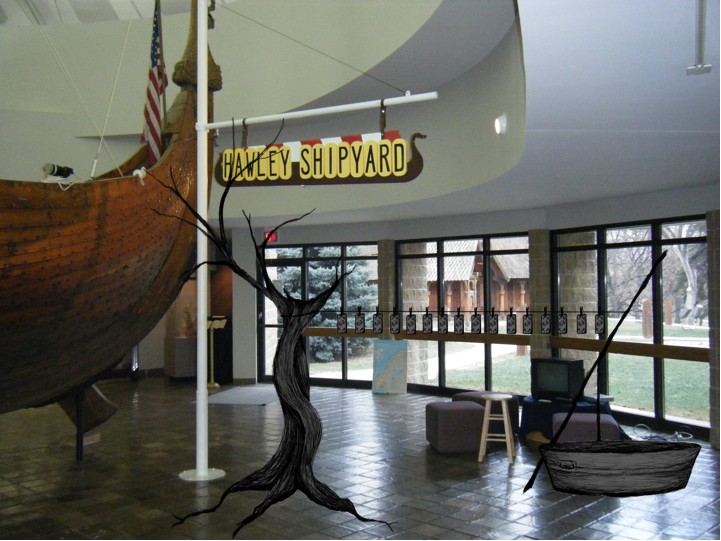
Figure 2: Proposed peripheral for Water Fight. Image by Kathryn Dunlap.
Kathryn Dunlap proposed and even composed a mock-up (Figure 2) for a peripheral
that would be placed inside the Hjemkomst Heritage Center in Moorhead, Minnestoa,
along the banks of the Red River of the North. "The tree sculpture
is metal and harsh, it's also dark, dead and twisted looking, but I designed
it with flowing curves to suggest something aesthetic and pleasing."
The tree included other elements that brought attention to her cause. "The
clothesline would be strung with dollar bills on clothespins which works
on three levels. First it's that idea of dirty corporate money profiteering
off of the sale of water, the need to wash that money clear of corporate
greed, and because visitors are encouraged to take a dollar from the sculpture
it represents taking that dirty money, cleaning it and putting it back into
the hands of the people." Kevin has been able to build a clothesline
with money, including the "Water Fight.net" stamp, in Second Life;
perhaps to realize Kathryn's vision more effectively, visitors who touch
the money should receive Linden Dollars with a request that they re-invest
in global water projects.
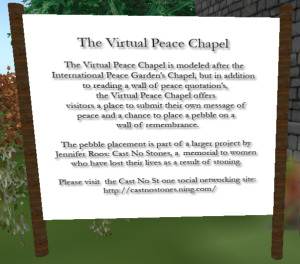
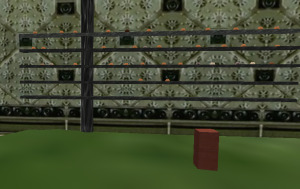
Figure 3: Welcome sign and peripheral for Cast No Stones. Image by Kevin Brooks.
Jennifer Roos worried that her peripheral was the weakest part of her MEmorial.
"While I do not deny many sacrifices and much loss go unnoticed and
unmourned, I am uncomfortable with attaching another meaning to a sacred
space." Despite her misgivings, and after considering other alternatives,
she settled on the Neuer Borneplatzmemorial in Frankfurt, Germany. Mounted
on this memorial wall are 11,000 ledges; each ledge has the name of a Jewish
Holocaust victim from Frankfurt. Visitors pick up small pebbles from the
ground nearby and place them on the ledge in honor of the victims. Roos
sees her peripheral as complementing this existing memorial by establishing
a wall of her own in a virtual world such as Second Life (Figure 3). "Visitors
could place virtual stones above the names of victims killed by friends
and family who disproved of their romantic choices. Visitors could also
add names to the wall in remembrance of new losses." Jenn's goal with
the peripheral becomes one of transformation--changing the meaning of the
stones from a symbol of stonings leading to death, to one of remembrance
and honor. In the same way she hopes to transform attitudes by shedding
light on those who have sacrificed for love.
Erik Kornkven "was not sold on the idea of a conceptual peripheral"
so he imagined a computer desk more or less built out of books, but each
book used would need to be available, full text, online. "I felt this
peripheral would work on two levels. First it would show that no matter
how advanced we get electronically, the foundation of our knowledge rests
on the printed word. Secondly, it would force observers to reconcile with
their own emotional attachment to books." Erik imagined this desk being
placed in the lobby of North Dakota State University's library, which functions
as the existing monument to print culture. "[T]he peripheral would
force observers to acknowledge some of the unseen sacrifices we are making
in the name of electracy."

Figure 4: Happy Meal boxes as testimonial in Second Life. Image by Kevin Brooks.
Landon Kafka's peripheral related to his MEmorial dedicated to the dangers
of capitalism was inspired by his boyhood trips, when the family would typically
eat a fast food meal. "These road trips almost always included one
stop at McDonalds and inevitably the purchase of a Happy Meal for me and
my younger siblings. I figured McDonalds would be a good existing monument
because it is a global icon that almost all 'haves' could easily understand."
These early memories were the foundation for creating his own happy meal
box including a comic book dedicated to his topic. "By using the Happy
Meal I am taking a weapon of mass consumption and trying to re-utilize it
in a way that informs about economic practices and widening disparity between
rich and poor. I feel that pictures of those who are negatively affected
by global capitalism (mainly families and children in third world countries)
would have more of an impact on children because they are not so set in
their beliefs and are more likely to sympathize with others their own age
despite cultural differences." Landon's peripheral therefore becomes
closely linked to his target audience- future generations who still have
a chance to be influenced and recognize the dangers of capitalism. Brooks
modified Kafka's proposal when he brought it into Second Life (Figure 4).
He built two large happy meal-like boxes and put one page of Kafka's testimonial
on each surface, capturing the iconicity of the happy meal box but turning
the peripheral into an information-rich site.
Niles Haich recognized the value of the peripheral to the project and therefore
it provided him with extra incentive to create one that would quickly connect
the observer to his environmental theme. He acknowledged that he struggled
to come up with a strong peripheral, but ultimately arrived at something
that embodies his message. "My peripheral became the idea of placing
a global structure covered in oil in Theodore Roosevelt National Memorial
Park so as to raise awareness of people's maltreatment of the natural resources
of the nation." For Niles, even though this idea may not ever be realized,
his peripheral became an inspiration for other elements of his MEmorial:
"The peripheral picture . . . actually morphed into my emblem [Niles
pouring oil over a globe] and slogan [Defend the Natural Resources: Carry
a Big Stick]".
Three of the six proposed monuments might be what Ulmer (2005) calls "abject
monuments:" a car set ablaze with slightly burnt car bears being handed
out, a world covered with oil, and a Happy Meal box displaying images of
needy, hungry children. The other three are perhaps more subtle monuments--a
desk made of books, an wall for pebble placement, a clothesline with "dirty
money"--although these three, as much as the other set, are trying
to bear witness to overlooked issues. The MEmorialists were also generally
successful at imagining interactivity: visitors to Kathryn's MEmorial would
take dollar bills that in turn would have a URL stamped on them; Jenn's
visitors would place a stone on a wall in Second Life; both of these interactive
MEmorials are now part of the Virtual Peace Garden in Second Life. Niles'
globe, when built in Second Life, can be copied and left throughout that
virtual world, just as one can now copy and re-deploy other elements, including
a Peace Pole, in Second Life. Because of the abject nature of these projects,
however, the peripherals are not objects of identification; they do not
have the simple beauty of a folded paper crane, symbol of the Hiroshima
Peace Museum.

